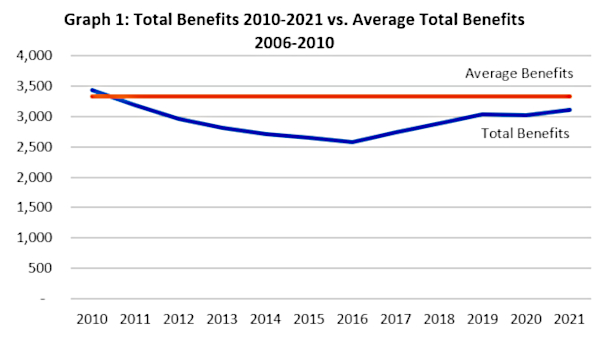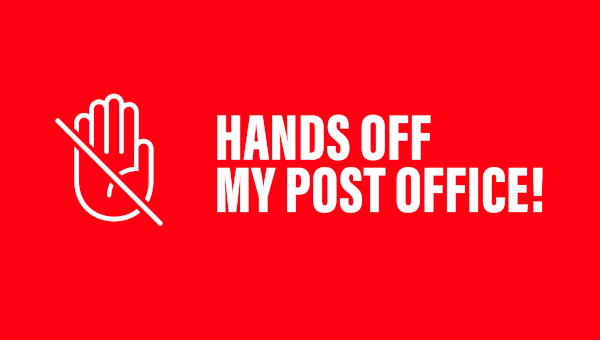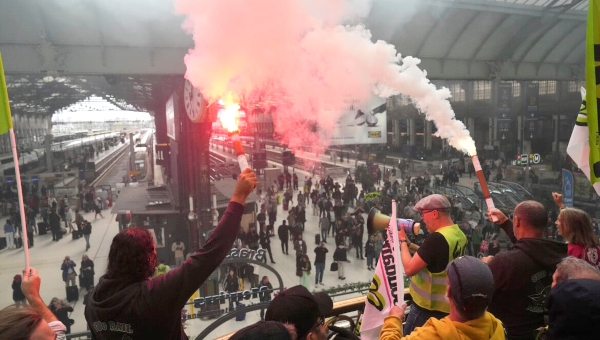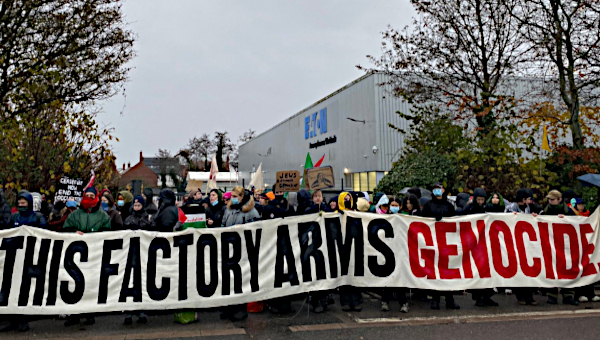A sign of the tragic disarray of the Canadian labour movement is the extent to which its misadventures keep piling up. As the turmoil within the union representing the Ontario government’s unionized employees (Ontario Public Service Employees Union – OPSEU) hits the press, the chaos continues in Local 113 of the Amalgamated Transit Union (ATU). The 10,500 members in that local – over a third of the ATU’s Canadian membership – operate and maintain Toronto’s transit system, North America’s third largest public transit system, behind only New York and Mexico City. As with OPSEU, the acrimonious story is not about a tough strike or a response to an anti-union government. Rather, at a time when the union should be leading the charge to address popular frustrations with the failures in the city’s transit system, the local is preoccupied with a messy internal battle.
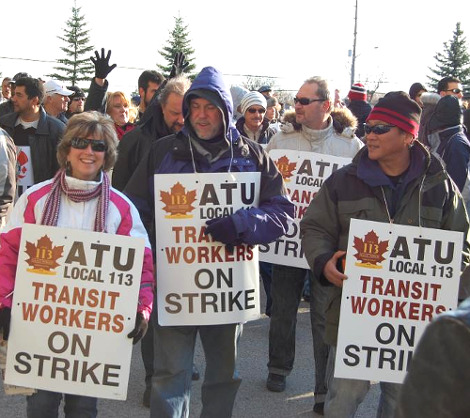
Local 113 President Bob Kinnear had attempted to break away from its American-based parent and, in what was quickly apparent, to join Unifor, Canada’s largest private sector union. For the time being he has clearly failed. The tale is mired in territorial conflicts over the members involved, legacies of personal nastiness among Canadian union leaders, whispers of conspiracy on the part of Unifor and the Canadian Labour Congress (CLC), of national flag waving and charges of U.S. imperialism, counter-denunciations of ‘nationalism’ and undermining international solidarity, opposing interpretations of democracy, a remarkable – if challenged – court decision, and miscellaneous elements impenetrable to either inside or outside observers.
Though we can’t avoid delving into some of the sordid details of this development, we’ll try to limit the noise of the various intrigues involved (for a blow-by-blow see: “ATU Trusteeship, Unifor Raid, CLC Crisis”).1 The two crucial but difficult tasks are to get to the basic principles at stake and – above all – to figure out where the members stand and how their voices might play a more direct role in resolving this sordid clash.
Breaking Away
In trying to get a handle on this, a useful starting point is to compare it to an earlier breakaway from an American-based parent, one that is now generally even if not unanimously seen in positive terms: the formation of the Canadian Auto Workers (CAW) a little over three decades ago. The following differences are significant:
- The formation of the CAW involved a nation-wide section of an international union (the United Auto Workers – UAW) breaking away. ATU Local 113 is a local in one city.
- The autoworkers’ major bargaining was fully integrated across Canada and the USA. Local 113 bargains autonomously.
- The autoworkers’ split revolved around a clear and historic question: how to respond to concessions and the right of Canadians to make that decision themselves – in the face of actions taken by the international UAW to deny that right. No clear, agreed upon, issue has been articulated by Local 113.
- The Canadian autoworkers had established an overwhelming unity before it moved to break from their parent. Not only are the rest of the ATU locals (almost 2/3 of the Canadian members) apparently supportive of their international ties but even within Local 113, a clear majority of the executive board and an even larger proportion of the stewards have taken a stand against Kinnear and the split, with little or no indication (other than the usual rumblings in any union) of a rank and file rebellion against the parent.
- The Canadian autoworkers patiently developed the membership support for taking on the risks of breaking away. The union first withdrew from its cross-border collective agreement with Chrysler and struck the corporation on its own for the very first time. It later went on strike against GM in spite of pressures from its American parent, the UAW. Following that, it asked the UAW to take measures that concretely reflected Canadian autonomy. It was only after this was denied that the Canadians took the next, and very reluctant step of setting up their own Canadian union. All the while it brought its members into discussions of the growing tensions and went to the members to ratify the decision to break away. In the case of Local 113 on the other hand, the initiative by the president of the local to leave ATU seemed to very much come out of the blue.
- Finally, while it was easy to identify the Canadian autoworkers as representing progressive unionism against the faltering UAW, in the ATU conflict it is the Americans who apparently have the greater claim to that mantle. Larry Hanley, the president of the ATU, came to office with strong credentials in fighting for democratic unionism and won against the tired incumbents by promising to revive the union. He was one of the handful of U.S. union leaders who openly supported Bernie Sanders and has been moving to complement the workplace power of his members with community support through the organizing of a ‘bus riders’ union’. Hanley has as well dramatically expanded education and leadership training to ATU locals including in Canada. Local 113, according to Hanley, stands out as the one Canadian local that has abstained from these programs.
International Union, Canadian Members
The point is that the attempted breakaway from the ATU by Local 113 has no parallel to breakaways such as that of the CAW (now Unifor). It cannot be assumed – as Canadians generally tend to do – that the tag ‘Canadian” necessarily makes a group more progressive. Nevertheless, Canadian locals cannot be simply treated as any local in the U.S. with the same formal standing. No other country is penetrated by international unions centred elsewhere to anywhere near the extent that occurs in Canada and this fact demands great sensitivity on the part of unions that call themselves ‘internationals’ but which are in fact U.S.-based and controlled.
Unions straddling the Canada-U.S. border have, to varying extents, acknowledged this difference. Most have introduced structures and practices that move toward satisfying the principle of Canadian workers having the power to run their own affairs and determine their own policies, hopefully in solidarity with their American counterparts (The Canadian labour movement itself recognizes Quebec as a distinct region and its governing and operational procedures often apply differently in Quebec.) But even such accommodation can’t foreclose the possibility of Canadian workers choosing to follow the general international pattern of establishing their own national unions.
In this regard, certain elements of the ATU’s constitution are extremely troubling. As the court case launched against the receivership of the local by Kinnear and financed by Unifor noted, it is outrageously undemocratic to state that if only 10 workers decide to stay in the ATU, it is sufficient for those staying to retain the assets and ignore the votes of the other 99.9% of the membership. It is true that this rule – rooted in the 1930s and the desire to keep locals alive even if raided – doesn’t prevent the workers from deciding to leave the local in spite of the assets. And in this particular case it can be expected that the subsequent support from Unifor or another suitor would offset that loss and so make a democratic exit possible. But this clause is anachronistic and should be unilaterally dropped by any union respecting the democratic process.
Similarly, though Canadian delegates elect a Canadian Director of the ATU, that position is alleged (though disputed by the ATU) to have little or no resources or power. Greater weight resides in the election of a Canadian to serve as an international vice-president of the ATU as a whole. But that position is elected by all the delegates to the ATU Convention, not just the Canadians. This conflicts with CLC policy going back to 1974 and is an affront to Canadian democratic autonomy. (Note that when the ATU imposed its trusteeship on the local, it was the international vice-president that was put in charge.)
The Process…
Canadian unions have, via the Canadian Labour Congress (CLC) come together to reach a consensus on how to avoid the destructiveness of the conflicts that came with Canadian attempts to break away from U.S.-based parents and which overlapped with questions of raiding. This involved a step by step procedure enshrined in the CLC constitution (Article 4: CLC Constitution, Amended May 2014). This called for abstaining from tampering with another union’s members, application by a Canadian union/local to the CLC for a negotiated process to be put in place, a review of the complaints and an opportunity for the international to correct the problem, an independent report if there is no agreement reached, and finally a supervised membership vote if necessary backed by sanctions if that is blocked. In this case, however, this process did not get off the ground as both sides accused the other of undermining the process.
The ATU argued that Unifor President Jerry Dias had been secretly meeting Kinnear (“tampering”) and that Kinnear had no mandate from his executive or members to apply to the CLC for support in a breakaway. Dias countered that Unifor had started no raiding drive and signed no cards, and that Unifor’s financial support for Kinnear’s court challenge was primarily in support of the right of Local 113’s members to democratically determine their own future. In the court decision, the judge noted that the ATU’s quick strike to put the local into trusteeship and exile Kinnear served to block free speech within the local. In reaction to the trusteeship, CLC President Hassan Yussuff – it did not ease suspicions that Yussuff came out of Unifor – took the unprecedented step of temporarily suspending the CLC process (under Article 4 of the CLC’s constitution). This led to angry accusations, from international and national unions alike, that Yussuff was siding with Dias.
Suspending Article 4 formally allowed Unifor to raid Local 113, but with a trusteeship in place and no signs of serious membership support, a raid was clearly not on. The affiliates’ anger reflected a deeper concern: setting a dangerous precedent. Trusteeships are not uncommon in many Canadian unions; in condemning the ATU trusteeship and linking this to suspending protection against raiding, it seemed that raiding in cases of trusteeship was being endorsed. The strong reaction against this promptly led the CLC to reverse its position and reinstate Article 4.
Though the judge ruled that the rapid-fire trusteeship of the ATU wasn’t justified, the story doesn’t end here. If the judge’s decision is upheld in a challenge, Kinnear remains president. But with a profoundly antagonistic board and steward body, and a membership hardly rushing to his defense, Kinnear has for the time being not been coming into the union office. If the court’s decision is reversed, Kinnear will be formally gone but ATU’s overall reputation as a progressive, democratic union will be damaged by the continuing charges of heavy-handed intervention.
As for Unifor, it seems to have walked into a minefield it was unprepared for. It will argue that its commitment to defending the right of Canadian workers to make their own decisions has been reinforced by the court’s critical and precedent-setting decision for other Canadian workers contemplating a break from their parent. Even if the court order is reversed, the issue of greater or full Canadian autonomy has been highlighted. With the likelihood of Local 113 leaving the ATU seemingly foreclosed, at least for the time being, the ATU should be farsighted enough to consolidate this victory by consulting its Canadian locals on extending greater autonomy to them while deepening the impressive plans it has for strengthening the union and its locals’ activism more generally.
Closure to this sad chapter won’t however end without addressing the great silence of the members. The survival of Local 113 is ultimately based – as is the case in all unions – not on the behind-the-scenes-machinations of union executives or even consensus-based constitutional procedures, as important as these might be, but on democratic decisions directly made by the rank-and-file membership. This could occur through a CLC supervised vote (unlikely given the current chaos around the use of the CLC’s Article 4), or an ATU-initiated but independently-supervised ratification vote in Local 113 for staying in the union (also unlikely because of ATU concern for the precedent it sets for inviting such votes), or take some other form. But unless some democratic expression of membership sentiments emerges a cloud will continue to hang over all the parties involved.
Deeper Issues Confronting the Canadian Labour Movement
The dispiriting events piling up in the North American and Canadian labour movements are symptoms of the labour movement’s disorientation. Underlying the tensions exposed by the conflict in Local 113 are three deeper issues confronting the Canadian labour movement. First, once workers join a union, they cannot be treated as the property of the union. Procedures for democratically leaving to join another union must be accepted and this is true whether it is a national or international union. Trusteeships to prevent this are undemocratic and, of course, the combination of an imposed trusteeship and it originating from a foreign-based parent makes such interventions particularly poisonous. Of course applying this principle universally is not always clear-cut. It would obviously be destructive if members decided to shop around for another home – rather than fight to change their union – because of a particular slight or imperfect end to bargaining. And local trusteeships determined by a central body on behalf of union-wide concerns are in fact sometimes necessary, as when there is corruption that is also linked to blocking internal democracy.
“The problems with raiding is not just that it is destructive to class solidarity but that it tends to offer an easy ‘fix’ to tougher problems and serves as a diversion from these challenges.”
Second, this emphasis on the right to leave might suggest that what is negatively labelled ‘raiding’ might be validated as contributing to ‘liberating’ workers from an oppressive union. This will in some cases be true, but this defense of raiding is very often only a glib justification of expanding one union’s dues collecting power at the expense of another. The problems with raiding is not just that it is destructive to class solidarity but that it tends to offer an easy ‘fix’ to tougher problems and serves as a diversion from these challenges.
Those familiar challenges include: How can unions correct their generally sorry record in organizing new members? Can unions actually demonstrate real solidarity and introduce joint campaigns to organize new members independent of which of them gets the ultimate dues (or whether none do as new unions are set up)? And is the key to organizing better techniques, or does it start with the kind of radical internal revival and reorientation that leaves unions both more attractive to non-union workers and more likely to mobilize the internal disposition and resources to make creative organizing breakthroughs possible?
Third, in the particular case of international unions, it is often said that globalization strengthens the case for international unions. In fact, however, because the main impact on workers’ lives has shifts from collective bargaining outcomes to the policies of the state – e.g. social service cutbacks, privatization, back-to-work legislation, inequitable tax reform, and free trade – the strategic importance of national class alliances becomes correspondingly more significant than cross border ties established in an earlier period. In this case, demanding the autonomy to genuinely address the development of class power within Canada – up to and including breaking away from the U.S.-based parent – may make perfect sense. And it need not be inconsistent with greater overall internationalism (the CAW became significantly more internationalist after it broke with the UAW).
But this involves more than reducing the serious step of a breakaway to an abstract nationalism. Working class sovereignty can only have legitimate meaning if it starts with the Canadian rank and file as the final arbiters of changes in Canadian structures. It demands building the working class in both Canada and the U.S. through bringing more workers into unions rather than fighting over dues. And it means collectively struggling with how to reinvent our unions and extend their boundaries into all dimensions of working class lives. •
Sam Gindin is the author of The Canadian Auto Workers: The Birth and Transformation of a Union.


